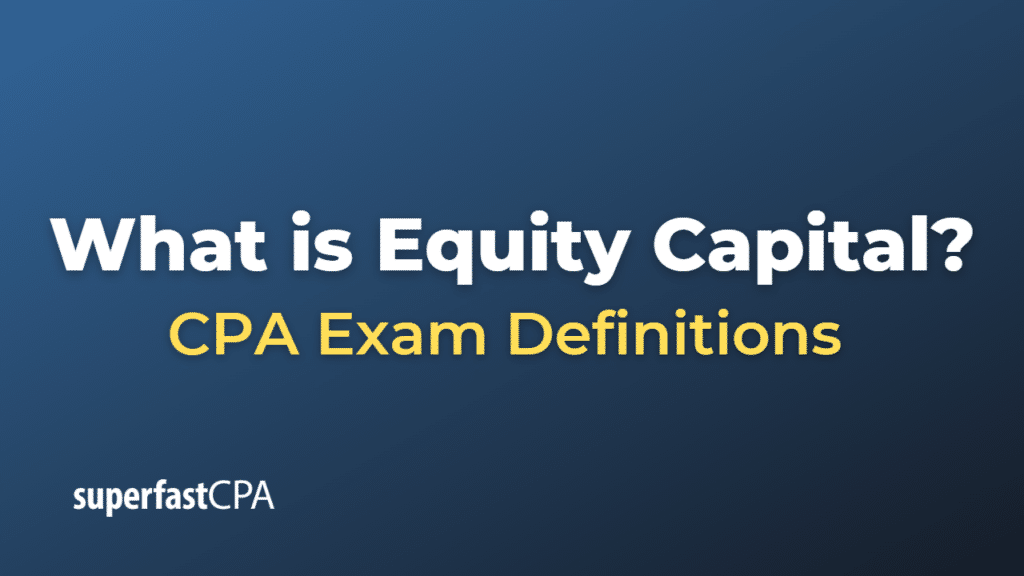Equity Capital
Equity capital, also known as shareholders’ equity, represents the funds generated by the sale of stock in a company or the initial and additional contributions made by the owners (shareholders). It represents ownership interest and is one of the two main sources of a company’s capital, the other being debt.
Equity capital can be used to fund new projects, acquisitions, or to offset operating losses. Unlike debt capital, it does not need to be repaid directly, but investors expect a return on their investment, either in the form of dividends, share price appreciation, or a combination of both.
Equity capital is listed on a company’s balance sheet and is calculated by subtracting total liabilities from total assets. It includes:
- Paid-in Capital: This represents the money that the company has raised by selling shares of stock, either common or preferred shares. Paid-in capital is divided into the par value of the stock and additional paid-in capital, which represents the excess received over the par value.
- Retained Earnings: This represents the accumulated net income of the company that has been retained (not paid out as dividends) since the company began. Retained earnings can be used to fund growth or to pay down debt.
In exchange for equity capital, investors receive ownership interests in the company. The larger the investment, the more significant the ownership stake. This means that equity capital can also lead to dilution of control, depending on how much equity is sold to outside investors. However, it also means that the investors’ potential return is theoretically unlimited, as they participate in the company’s success.
Example of Equity Capital
Let’s imagine a scenario involving a start-up company:
John and Jane decide to start a tech company, which they call TechVentures. They both invest $500,000 each of their personal savings into the business. This is equity capital, specifically referred to as “paid-in capital,” because it is money the owners have contributed to finance the company.
A year later, the company needs additional capital to grow. They decide to raise more equity capital by selling additional shares of the company to outside investors. They hold a round of funding and manage to raise an additional $2 million.
In this case, the total equity capital of TechVentures now is $3 million ($500,000 from John + $500,000 from Jane + $2 million from new investors). This capital will be used to fund the operations, research and development, pay employees, and expand the business.
However, in raising this additional equity capital, John and Jane have also had to give up some ownership in TechVentures. If the $2 million investment bought the new investors 40% of the company, for example, John and Jane now only own 30% of the company each. This is known as dilution. But on the positive side, they have not taken on any debt and have no obligation to repay the investors, unlike a loan. The investors’ return will come from their ownership stake in the company and any dividends the company may pay in the future.
Remember, this is a simplified example. Actual fundraising rounds involve complex valuations, negotiations, and legal agreements. Also, managing equity capital in a business should involve a careful balance between maintaining control and financing the company’s growth or operations.













